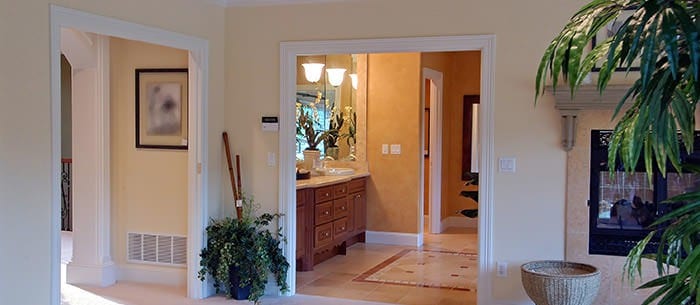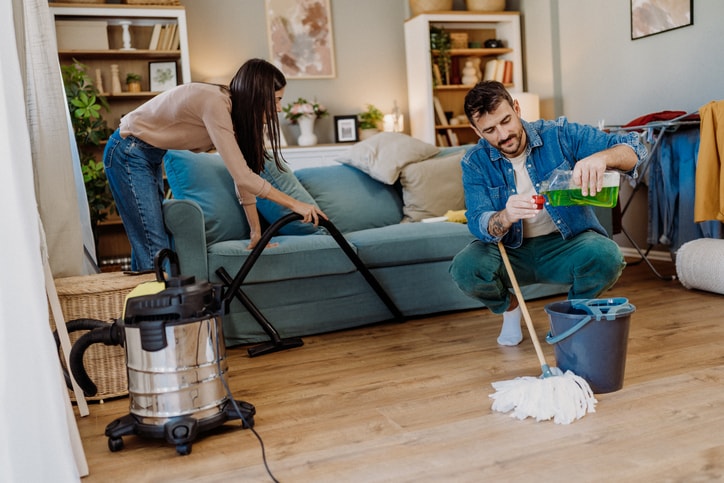We’ve all heard stories about the dangers of toxic mold (mold that may cause illness). But how to avoid those problems is not as widely known.
According to Jeff May, an expert on mold and the author of four books on the topic — The Mold Survival Guide; My House is Killing Me; My Office Is Killing Me, and Jeff May’s Healthy Home Tips — molds require three things to live:
- Moisture
- Air
- Food (dust, plant fibers, starch paste, etc.).
May says that anything we can do to reduce these three elements will help us prevent a mold problem, and he offers eight specific tips for preventing mold growth in your home.
How to prevent mold growth in your home
Control moisture. By controlling moisture (including relative humidity), you will control mold growth. In the cooler months, keep basement spaces heated (to at least 60 degrees) and avoid over-humidifying your home. In the warmer months, dehumidify basement areas to below 50% relative humidity. Make sure the ground slopes away from your home and keep your gutters clean to help prevent water from seeping in. Repair leaks as soon as they are discovered. Don’t over-water plants.
Keep all mold “food” out of in your basement. Keep all things stored in basements — especially cardboard boxes — at least several inches off the concrete floor and away from dampness which seeps in through foundations. Metal or plastic shelving is better than wooden bookcases in basements. Don’t let dust accumulate there.
Limit moisture in kitchens and bathrooms. Use fans in these rooms that vent to the outdoors (and not into attics). Make sure the fans are adequate to vent the area to be covered, and run them for a minimum of 20 minutes to fully deplete the area of moisture. After bathing leave the bathroom door open to enable the area to dry out more quickly.
Avoid attracting mold with your basement flooring. Carpets are believed to attract mold, and carpets in basements are especially risky. Safer flooring for your basement would have a hard surface–like tiles, laminates or engineered hardwood.
Thoroughly clean and inspect your air-conditioning system yearly. Air-conditioning systems attract mold due to the moisture involved. Each season the system must be thoroughly cleaned and inspected for mold in all parts — whether it is central, portable air, or a split system. Otherwise, mold spores in one part of it could be blown out through the system and dispersed throughout your home.
Clean up all major leaks or floods immediately. If you should have a major leak or flood, by acting immediately you can prevent mold growth. All soaked carpets and padding must be thoroughly dried and any wet upholstery removed. Before replacing the carpet or pad, all surfaces must be washed and disinfected.
Consider installing a whole-home dehumidifier. Unlike portable dehumidifiers which serve just a small area and must be emptied frequently, a whole-home unit would be permanently installed by a qualified HVAC technician into your heating and cooling system. It will run all the time, reducing the amount of moisture in your home. If you install one, however, be sure to clean the air filter several times a year, and check that the cooling coil is completely clean because mold can grow in the dust on the wet coil of any dirty dehumidifier. Either wash the filter regularly or check to see if a throw-away, pleated filter can be used as a replacement for the washable filter.
Remove any mold as soon as you find it. If there is mold growth in your home, clean up the mold and fix the water problem immediately. You can remove mold growth from hard surfaces with commercial products, soap and water, or a solution of no more than 1 cup of bleach in 1 gallon of water. If you choose to use bleach to clean up mold:
- Never mix bleach with ammonia or other household cleaners, as that could create dangerous, toxic fumes.
- Open windows and doors to provide fresh air.
- Wear non-porous gloves and protective eye wear.
- If the area to be cleaned is more than 10 square feet, consult the U.S. Environmental Protection Agency (EPA) guide titled Mold Remediation in Schools and Commercial Buildings. You can get it free by calling the EPA Indoor Air Quality Information Clearinghouse at (800) 438-4318, or by going to the EPA online.
If you do need mold remediation services, make sure the service provider is experienced. To locate a reputable one, ask for references from your insurance company and from past clients, check the company out with organizations such as the American Indoor Air Quality Council and the Indoor Air Quality Association. Since specialized training matters, find out what sort of education and certification your potential contractor has.
Ronnie Friedland is an editor at Care.com. She has co-edited three books on parenting and interfaith family life.



